|
John Asano
Discover a World of Tiles at the Mosaic Tile Museum in Tajimi

The city of Tajimi in Gifu Prefecture is famous for its pottery industry and tile production. For over 1,300 years the area has been home to pottery and ceramics referred to as Minoyaki (Mino ceramic ware). The best place in town to dive in and learn all about Tajimi’s ceramics heritage is the Mosaic Tile Museum, which is home to decorative art displays, showcasing the beauty and history of mosaic tiles in Tajimi.
Table of Contents
The History of the Museum
Located in Kasahara Town in Tajimi City, the Mosaic Tile Museum opened in 2016 and is home to over 10,000 artifacts and exhibits. The local tile industry and members of the public had a very hands-on involvement in the construction of the museum.
During its heyday in the mid-1900s, Kasahara had over 100 tile factories, making it the largest producer of mosaic tiles in all of Japan. The history of ceramic production in Kasahara stretches back some 1,300 years but it wasn’t until the twentieth century that the ceramicists started to focus on making tiles. The area surrounding the museum is Japan’s leading producer of mosaic tiles, and visitors to the museum will quickly discover how much the locals love this art.
The Charming Museum Building
The museum building itself is a work of art, designed by avant-garde Japanese architect, Terunobu Fujimori. The highly acclaimed artist drew inspiration from Tajimi’s tile industry and the clay which supplies the ceramics.
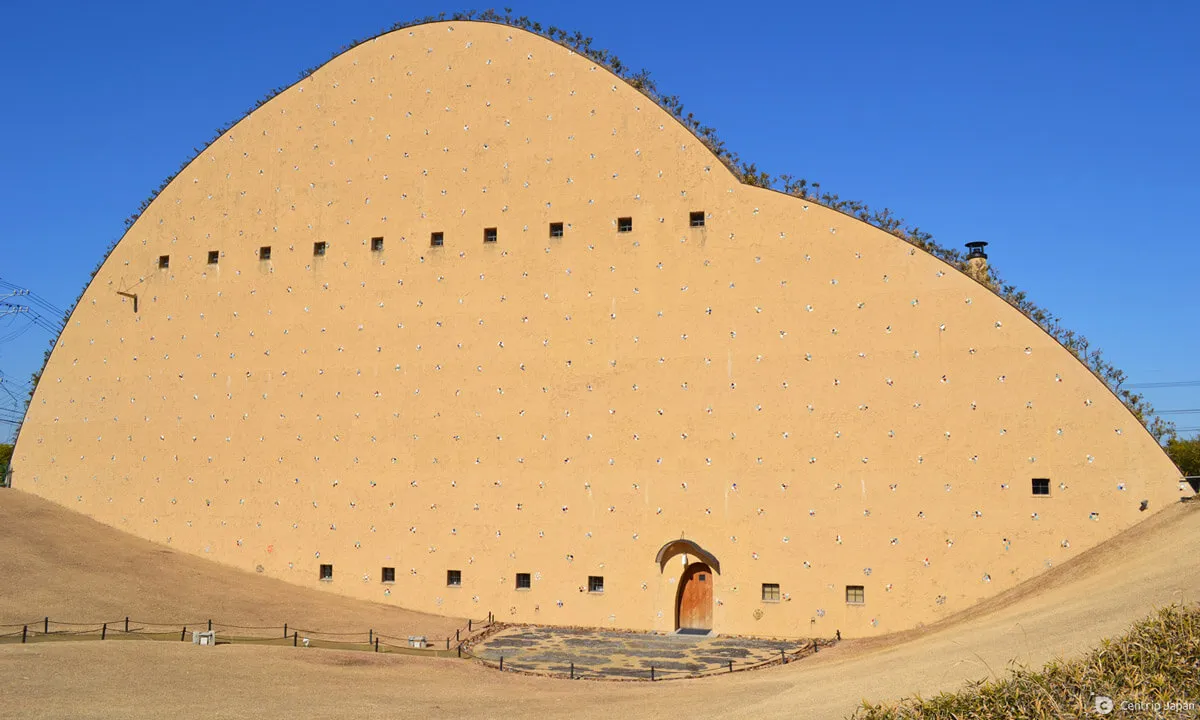 The museum building from the stairs leading to the entrance
The museum building from the stairs leading to the entrance
The eye-catching building’s sloping shape resembles the face of a clay quarry, where the clay used in tile production is found.
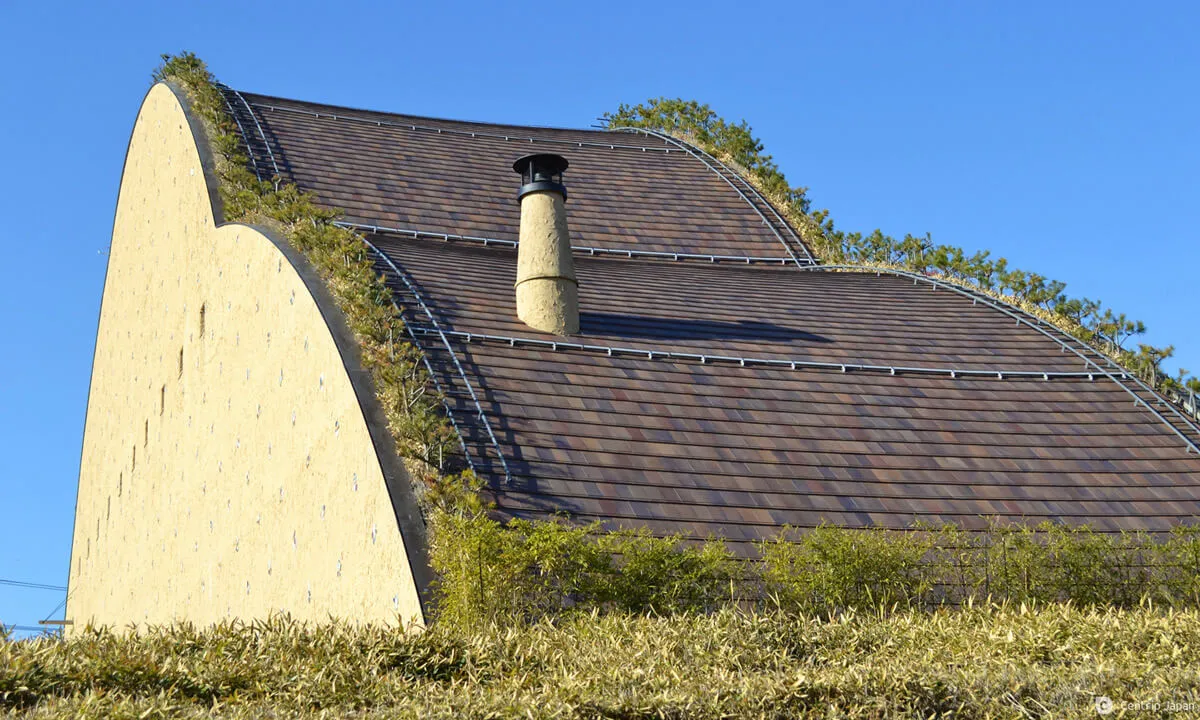 The sloping shape resembles that of a clay quarry
The sloping shape resembles that of a clay quarry
The building’s earth-colored façade is decorated by shards of tea bowls and tiles donated by local residents.
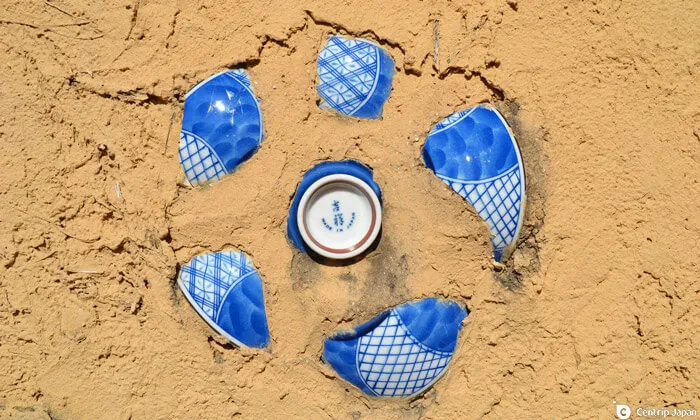
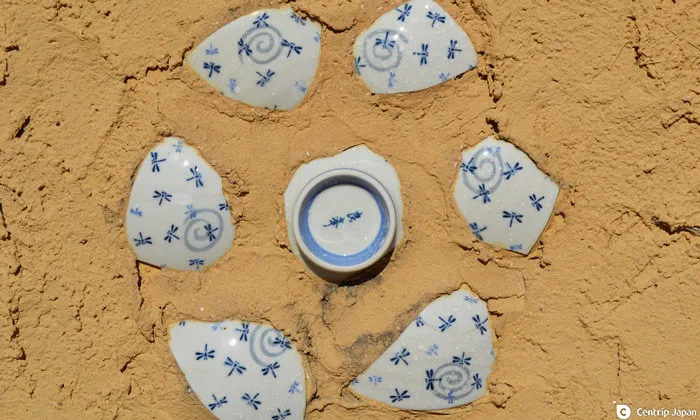
Inside the Museum
Inside the museum, you can see a diverse variety of tiles that are used in exhibits ranging from an enormous Showa era (1926-1989) collection of locally produced tiles to old-fashioned bathroom utilities such as sinks and bathtubs. This place is retro heaven for any retrophile.
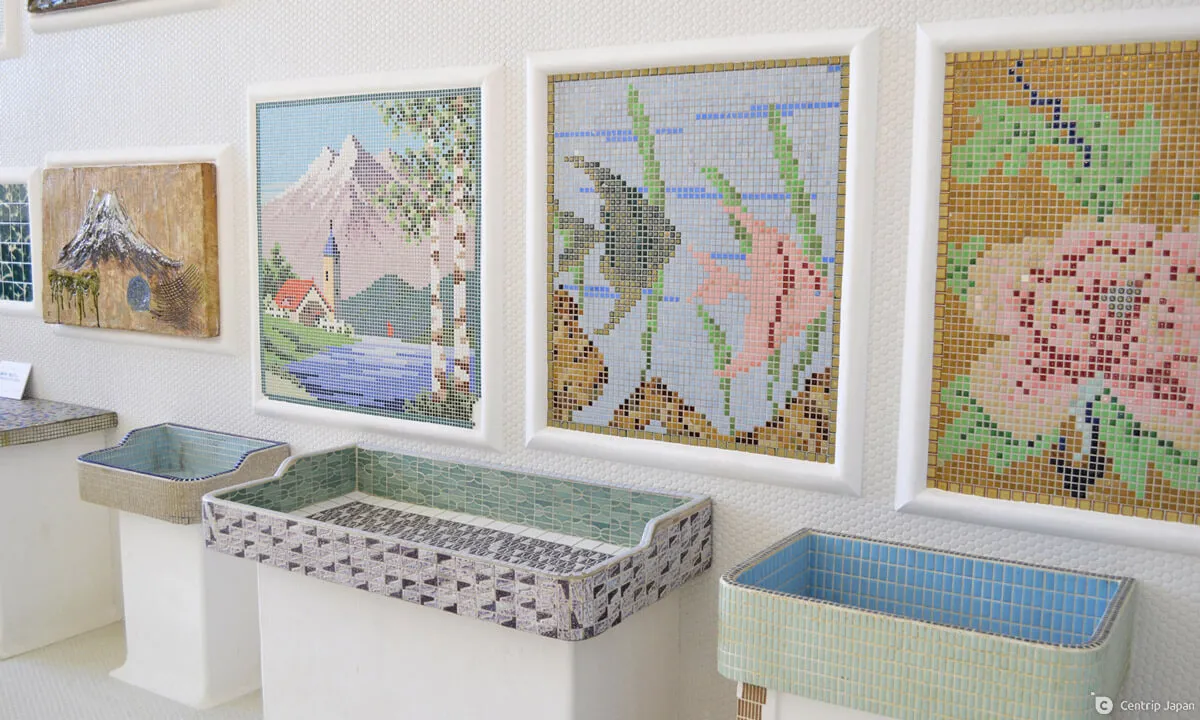 Retro heaven on the fourth floor
Retro heaven on the fourth floor
The exhibition rooms on the third and fourth floors display a vast collection of beautiful mosaic tiles and information relating to them, allowing visitors to learn about the deep history of tiles in Japan.
After purchasing entry tickets at the information desk on the first floor, the recommended route is to start at the top on the fourth floor and work your way down to the first floor.
 Stairs leading up to the second floor
Stairs leading up to the second floor
The Fourth Floor Exhibits
The bright, open exhibition space of the fourth floor was also designed by Fujimori and showcases the practical and artistic possibilities of tiles, which are countless. The vast collection of mosaic tiles was selected by the architect himself and include mosaic tile picture designs, painted tiles, and even a retro washbasin and bathtub.
Some of the displays here were donated to the museum from around Japan, including sento tiles from public baths. There is lots of cool and interesting mosaic artwork to admire here.
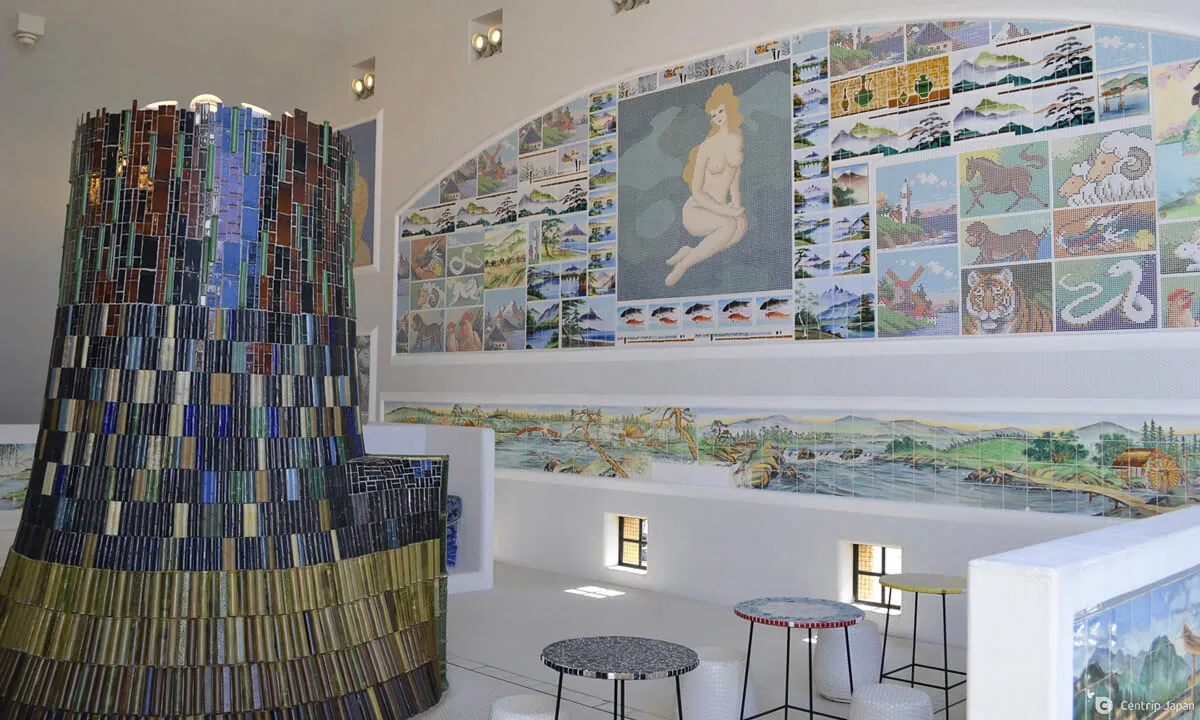 Some of the fourth-floor exhibits
Some of the fourth-floor exhibits
This exhibition room is covered from floor to ceiling in thousands of small circular white tiles with the natural light illuminating the fantastic displays, creating a truly magical experience.


The Third Floor Exhibits
The displays on the third floor cover the local history of mosaic tile making in and around Tajimi. The permanent exhibits show the development of the tile industry and its connections to the local geography and traditional pottery industry of the area. You can also see a variety of tools and equipment which are used in tile manufacturing and special exhibitions are held about three times a year.
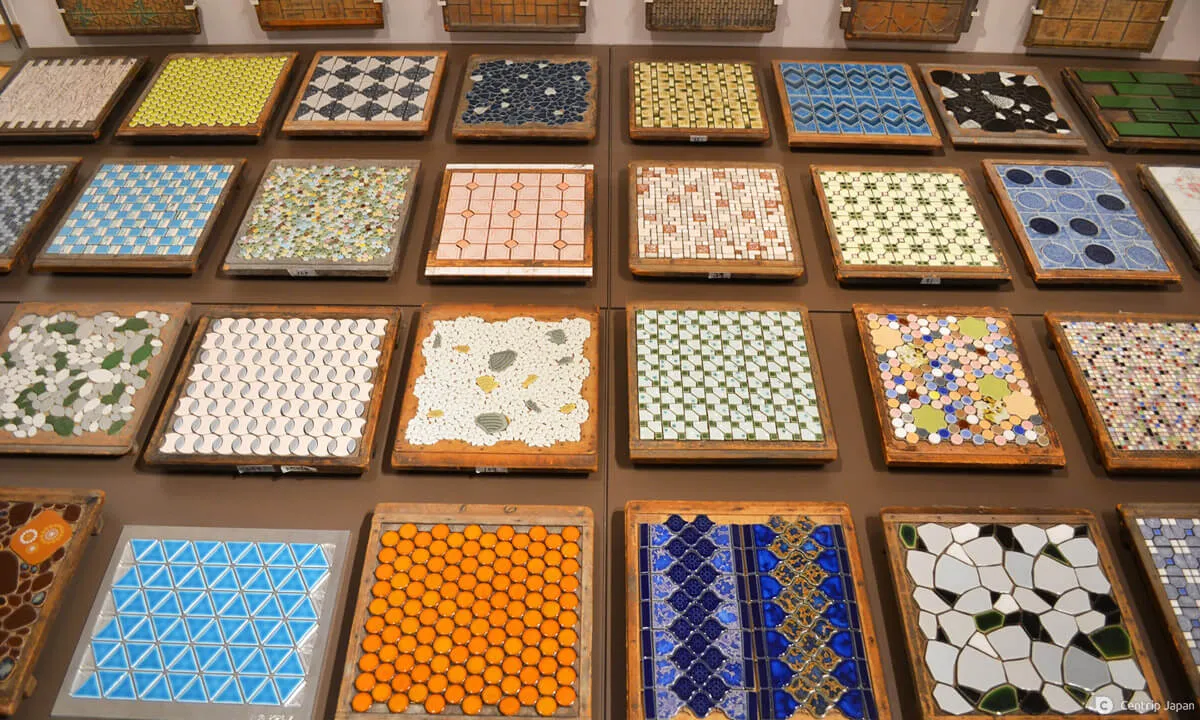 Stunning tiles on the third floor
Stunning tiles on the third floor
The Second Floor Showroom
On the second floor, you will find a showroom with tiles that you can actually purchase for your home renovation or decoration.
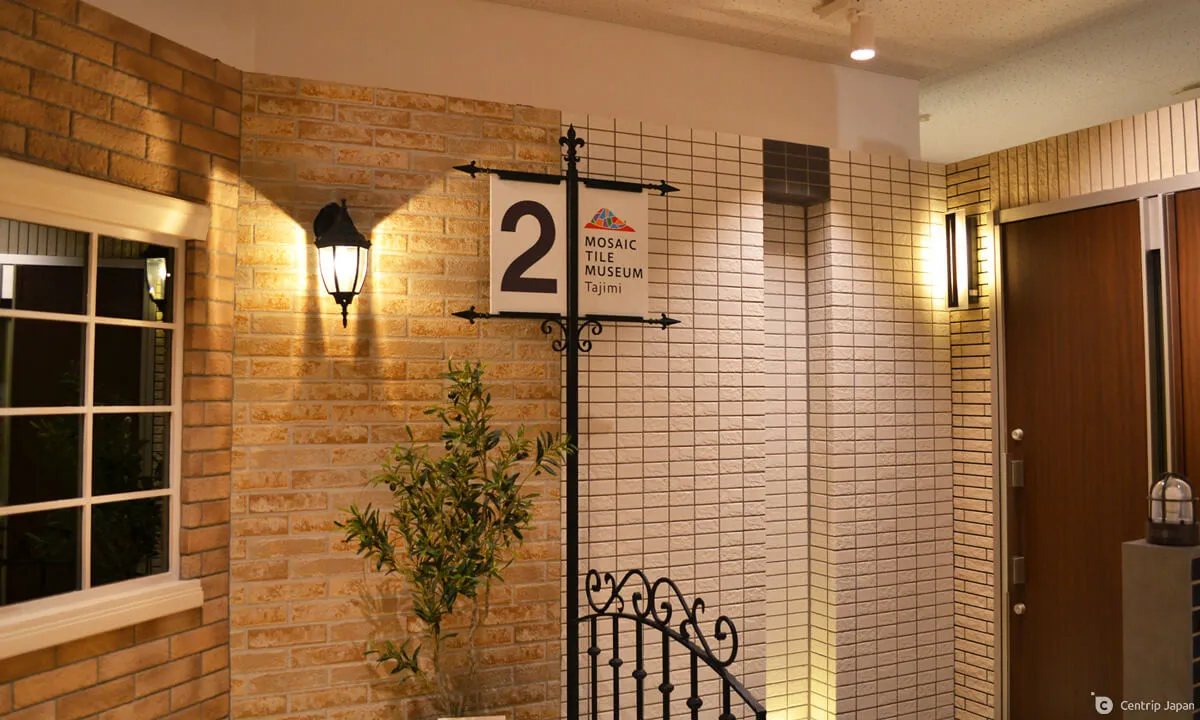 Showroom on the second floor
Showroom on the second floor
Here you can order locally manufactured tiles with the help of the friendly and knowledgeable tile concierge. There are display kitchens, bathrooms, and laundry rooms to inspire your next renovation or new home. It is a great way to find out how you can use more tiles in your life.
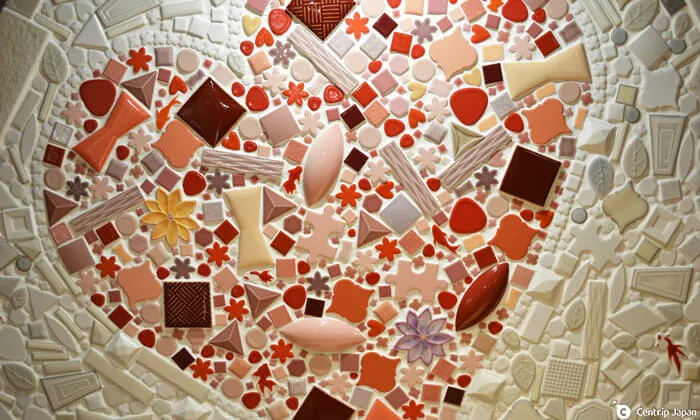 A heart of tiles
A heart of tiles
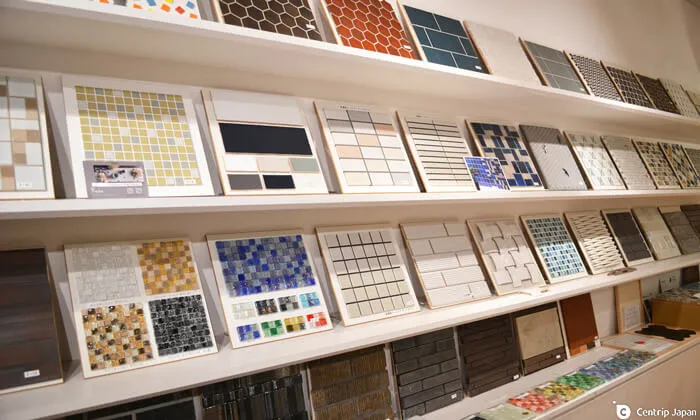 Tiles on display for purchase on the second floor
Tiles on display for purchase on the second floor
The Entryway
At the entryway on the way to the second floor of the museum from the first floor, visitors will find an alcove, which displays a single piece of artwork that is key to the building’s design.
The contemporary ceramic art piece is by local artist, Keiji Ito and is titled “Soku” which means foot in English. A similar piece to this inspired Fujimori’s concept for the museum building.
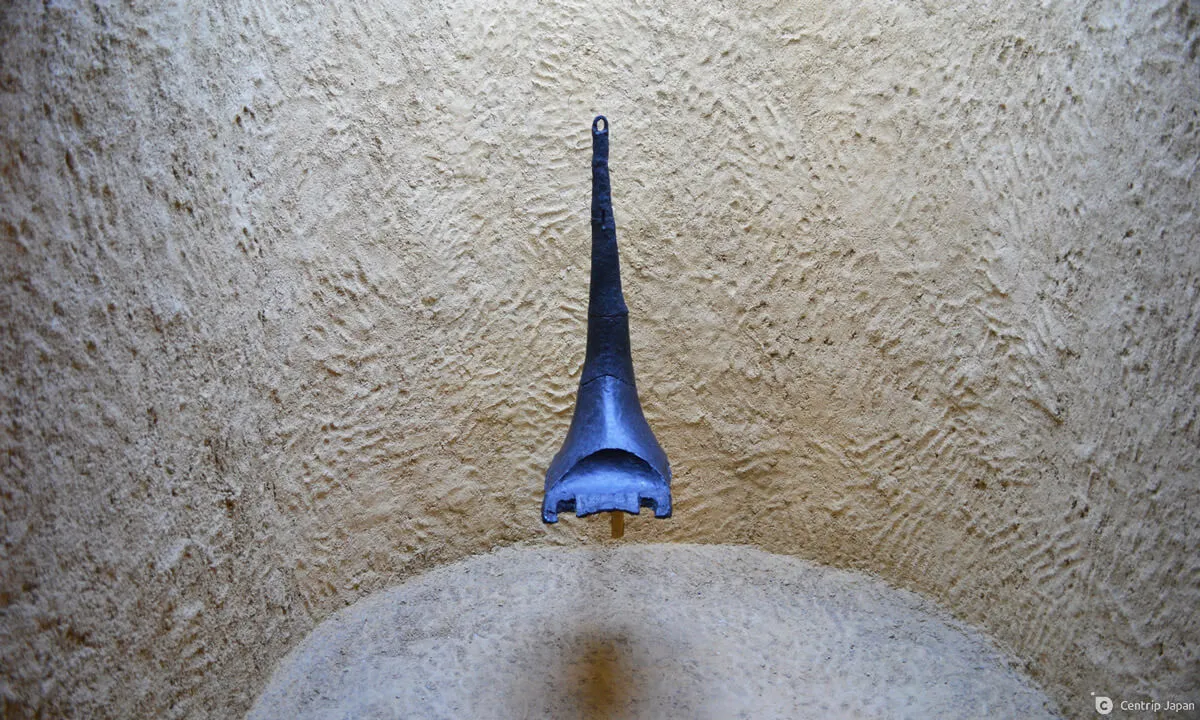 Soku by local artist Keiji Ito
Soku by local artist Keiji Ito
The First Floor
The first floor is the first stop for visitors and is home to a souvenir shop and craft workshop. One of the most eye-catching exhibits in the entire museum is the mosaic tile-covered car on the first floor.
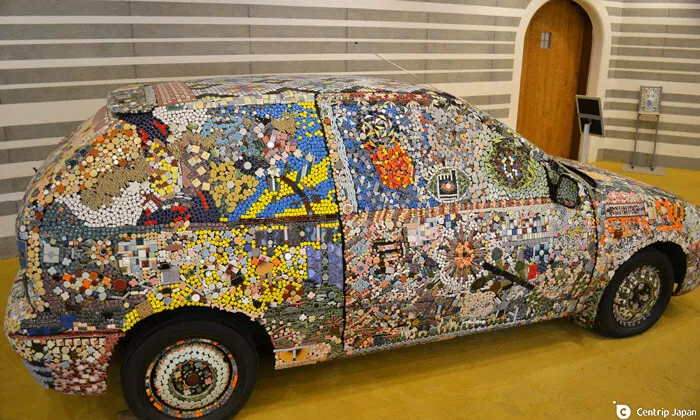
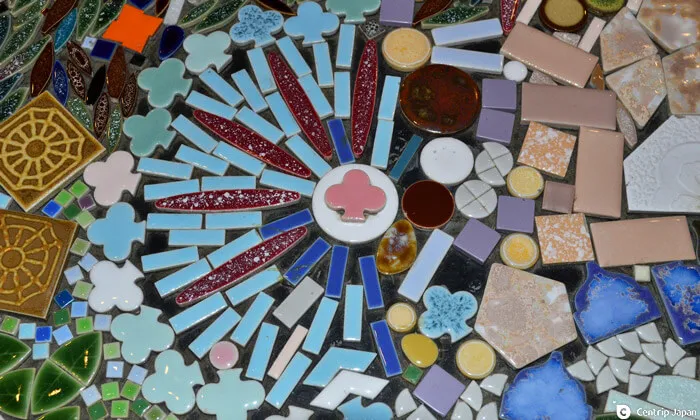
Make Your Own Mosaic Tile Artwork
The craft workshop and museum shop located on the first floor of the museum provide visitors with a chance to try their hand at making their very own mosaic tile artwork. Various mosaic tiles in a variety of colors, shapes, and sizes are available to help you create your own masterpiece or one-of-a-kind souvenir to take home. You can choose from a photo frame or other choices.
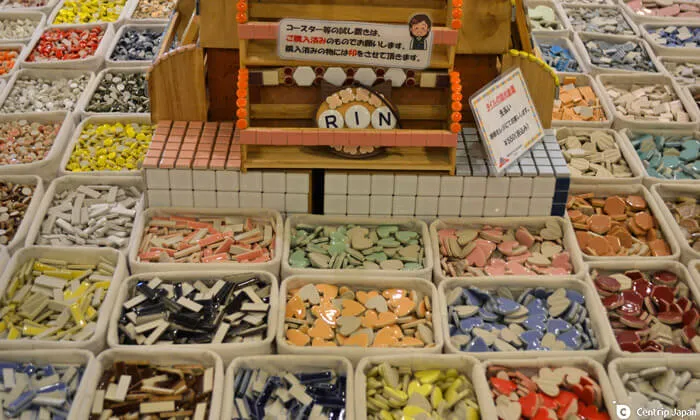 Tiles and more tiles
Tiles and more tiles
 The workshop on the first floor
The workshop on the first floor
Basic Information
Address: 2082-5 Kasahara-cho, Tajimi City, Gifu Prefecture 507-0901
Museum Hours: 9 a.m. to 5 p.m. (last admission 4:30 p.m.)
Closed:Every Monday (following weekday if national holiday), New Year’s holiday period
Fee: ¥310 (high school students and younger are free)
How to Get There?
From JR Nagoya Station, take a rapid train bound for Nakatsugawa on the Chuo Line to JR Tajimi Station. The journey takes around 36 minutes and costs ¥880. At the south terminal 2 of JR Tajimi Station, take a Totetsu Bus bound for either Higashikusaguchi or Hane, and get off at the Mosaic Tile Museum stop which is a short 20-minute ride.
If you are traveling by car, there is a small parking lot with 10 parking spaces next to the Azalea Hall near the museum, and a larger parking lot with 180 parking spaces is also available nearby.
Wrap Up
The Mosaic Tile Museum in Tajimi is less than 60 minutes away from the hustle and bustle of downtown Nagoya. A visit here will whisk you away to another world filled with enchanting and colorful tiles.

